.jpg)

Key takeaways
- FTX collapsed due to severe mismanagement, commingling its funds with its sister firm Alameda Research, and a lack of internal controls and risk management.
- The FTX bankruptcy is still ongoing. A recent announcement from the FTX bankruptcy users said that 98% of users would be paid back in full.
FTX was once one of the world’s biggest cryptocurrency exchanges. In 2022, it fell into bankruptcy.
In this guide, we’ll do a deep dive into the causes of the FTX collapse — and what it can tell us about the future of the cryptocurrency ecosystem.
FTX Collapse Timeline
- November 2, 2022: A Coindesk report reveals that FTX and its sister firm, Alameda Research were intertwined financially and that Alameda Research was reliant on the value of FTT, leading to market panic.
- November 6, 2022: Binance announces it will sell its holdings of FTT, sparking $1 billion worth of customer withdrawals in a single day. This causes a liquidity crisis for FTX and Alameda Research.
- November 7, 2022: FTX sees $4 billion worth of further withdrawals from the platform — exacerbating the liquidity crisis.
- November 8, 2022: FTX halts customer withdrawals due to a lack of liquidity.
- November 11, 2022: FTX files for bankruptcy. FTX Founder Sam Bankman-Fried resigns as CEO. On the same day, unknown hackers steal more than $477 million from FTX.
- November 17, 2022: John Ray III, the new CEO of FTX who presided over the Enron bankruptcy, makes the following statement: “Never in my career have I seen such a complete failure of corporate controls and such a complete absence of trustworthy financial information..”
- December 12, 2022: Bankman-Fried is arrested in the Bahamas.
- November 2, 2023: Bankman-Fried is found guilty of seven counts of fraud.
- March 25, 2024: FTX strikes a deal to sell its shares in the AI startup Anthropic for more than $800 million.
- March 28, 2024: Sam Bankman-Fried is sentenced to 25 years in prison and ordered to pay $11 billion in forfeiture.
- May 8, 2024: FTX announces that customers will receive the money they are owed. This is mostly due to the rise in crypto prices since FTX’s bankruptcy.
- May 24, 2024: FTX sells the last of its SOL holdings at a deep discount.
- June 18, 2024: FTX bankruptcy victims seek a ruling that forfeited assets belong to customers, not the bankruptcy estate.
What is FTX?
.jpeg)
FTX was launched in 2019 by Sam Bankman-Fried. Bankman-Fried launched FTX partially through the capital he earned through his crypto trading firm Alameda Research.
FTX was known for its user-friendly and highly customizable interface. The platform was considered a great option for beginner and experienced investors— with products like tokenized stocks, prediction markets, and crypto derivatives.
The company boasted prestigious investors like the venture capital firm Sequoia and even had ads with prominent celebrities like Steph Curry, Tom Brady (who also invested in the company), and Larry David.
FTX’s platform and its marketing helped the exchange have a meteoric rise — going from $20 million of revenue in 2019 to $1 billion in 2021. Shortly afterwards, FTX had a swift collapse — declaring bankruptcy in November 2022.
Why did FTX collapse?
.jpeg)
The FTX collapse was driven by a combination of factors.
The most notable factor is using customer funds to cover risky trades made by its sister company, Alameda Research.
What was the relationship between FTX and Alameda Research?
Alameda Research was a trading firm owned by FTX’s CEO Sam Bankman-Fried.
Alameda Research was given the ability to use FTX customer funds to make risky trades — showing how both companies lacked internal controls and risk management practices.
Alameda Research had tremendous success in its early years — as the company took advantage of arbitrage opportunities between US and Asian markets.
However, Alameda Research’s trading activity would eventually lead to the downfall of FTX.
What role did Binance play in the FTX collapse?
FTT, FTX’s native token, played a key role in the company’s eventual collapse.
Much of Alameda Research’s (and by extension, FTX’s) liquidity was tied to FTT, an asset with little value outside of FTX. While FTT was promoted as a liquid and valuable asset, it lacked the backing or demand necessary to maintain such a high valuation.
In November 2022, a report by Coindesk revealed that Alameda Research’s finances were dependent on FTT.
Shortly afterwards, Binance made the decision to liquidate its FTT holdings. This led to the collapse of FTX a few days later.
Many crypto investors who held FTT sold their assets in a market panic, which meant that Alameda Research did not have the liquidity needed to meet its commitments and faced margin calls. As a result, both Alameda Research and FTX declared bankruptcy.
Initially, Binance reported that it would buy FTX to save the company — and the wider cryptocurrency ecosystem — from a crisis. However, Binance backed away after learning more about FTX’s messy financial situation.
FTX’s bad management practices
It’s likely that FTX was a ticking time bomb due to its risky financial management practices.
.jpeg)
Author Michael Lewis used the metaphor of “dragon’s hoard” to describe the way Alameda Research, SBF’s trading firm, accumulated assets. Rather than being managed like a traditional financial company, Alameda’s holdings resembled a chaotic treasure trove filled with a mishmash of tokens, equity stakes, and speculative investments.
While most crypto companies do sophisticated risk analysis on their positions, FTX failed to implement safeguards.
How did the FTX collapse impact users?
While FTX was suffering from severe mismanagement, many users were unaware of its internal issues. Today, many FTX users are seeking to get their holdings back through the bankruptcy process.
How does the bankruptcy process work?
When FTX went bankrupt, customers suddenly lost access to their funds.
While FTX collapsed in 2022, the bankruptcy process is still unfolding. Unfortunately, bankruptcy processes often take years to resolve.
The bankruptcy process determines how funds are distributed to users. The first to receive funds are secured creditors — in other words, FTX’s investors. Unsecured creditors — like FTX’s users — are typically the last to get paid off.
Will users get their money back from FTX?
The crypto market and the value of FTX’s holdings — including the large amount of SOL that the company held — have increased since 2022, which gives hope that many users may receive their funds back.
In a court filing, FTX claimed that almost all customers will receive the full value of their money, with some creditors receiving supplemental interest payments.
Still, it’s important to note that FTX users did not have access to their holdings for almost two years. This means that investors were not able to cash out their gains from cryptocurrency during a bull market.
In addition, some commentators have criticized the way FTX’s estate is managing the bankruptcy. For example, FTX’s SOL was sold at a deep discount to crypto firms. Commentator Sunil Kavuri claimed that this showed that FTX was prioritizing the interest of bankruptcy lawyers over users.
In June 2024, some FTX users sued the FTX estate, claiming that forfeited assets should belong to users.
How did FTX get around government regulations?
FTX’s headquarters in the Bahamas
By operating in the Bahamas, FTX sidestepped many of the regulatory requirements imposed by U.S. authorities.
As an offshore company, FTX was able to avoid rigorous financial reporting standards and investor protections.
It’s likely that if FTX was based in the United States, its lack of internal controls and commingling of funds with Alameda would have been exposed to the public earlier.
FTX political lobbying
FTX also lobbied heavily in the United States, attempting to influence future crypto regulations in its favor.
CEO Sam Bankman-Fried was one of the Democratic Party’s biggest donors and seemed to see political donations as a ‘smart investment’ to gain political favor.
Bankman-Fried was quoted saying the following:
“It just seems like there isn’t enough money in politics,” said Sam. “People are underdoing it. The weird thing is that Warren Buffett isn’t giving two billion dollars a year.
Bankman-Fried’s public image
FTX CEO Sam Bankman-Fried cultivated an image of a likable philanthropist who would play video games during public interviews — which made him a media darling and helped avoid scrutiny into his business management practices.
Who is Sam Bankman-Fried?
.jpeg)
Sam Bankman-Fried (also known as SBF) is the founder of FTX and Alameda Research. Bankman-Fried was known for his meteoric rise — becoming one of the most well-known figures in cryptocurrency while still in his 20s.
Bankman-Fried portrayed himself as a selfless philanthropist who donated millions to charity. However, his actions showed that he had a lack of regard for risk management and the best interest of his customers.
Many who met Bankman-Fried complimented him for his superficial charm, but also described him as manipulative and lacking remorse.
Bankman-Fried’s Infinite Money
Bankman-Fried himself told his biographer Michael Lewis that his goal wasn’t just to become wealthy, he wanted “infinity dollars”.
Bankman-Fried was known for his love of video games. Some commentators claimed that Bankman-Fried even saw running his companies as a video game, claiming he used FTX customer funds as a ‘cheat code’ to reach his goals.
This seems to help understand why Bankman-Fried was willing to take on high amounts of risk to earn money. Bankman-Fried saw markets as systems to be gamed, focusing on exploiting arbitrage opportunities and taking outsized risks under the belief that rewards justified potential risks.
How did Bankman-Fried run his companies?
As the FTX scandal unraveled, it was clear that Bankman-Fried had for years made deeply unethical and risky decisions while running his companies.
As details came out about FTX and Alameda Research, it became clear that both companies suffered from severe mismanagement even before the crisis.
The book Going Infinite detailed an incident where $4 million of Ripple disappeared from Alameda Research’s holdings. Strangely enough, Bankman-Fried seemed unconcerned about the missing funds.
Many early employees in Alameda Research disliked Bankman-Fried and his reckless management style. One passage from Going Infinite details a meeting, which took place before FTX was founded in 2019, between Bankman-Fried and early Alameda Research employees:
At least some of [the Alameda employees] aimed to bankrupt Sam, almost as a service to humanity, so that he might never be allowed to trade again.
What did Sam Bankman-Fried say in his court testimony?
During Sam Bankman-Fried’s trial in October 2023, he defended his management practices and seemed to point the finger at Binance for causing a ‘run on the bank’.
Bankman-Fried made the claim that FTX and Alameda Research had its finances under control until Binance publicly undermined confidence in FTT.
These claims should be taken with a grain of salt. It’s likely that FTX’s collapse would not have happened if the company followed healthy risk management practices.
Ultimately, the courts found Bankman-Fried guilty of 7 counts of fraud and sentenced him to 25 years in prison and ordered him to pay $11 billion in civil forfeiture.
Where is Sam Bankman-Fried now?
Sam Bankman–Fried is currently serving out his 25-year prison sentence for multiple counts of fraud. The latest reports suggest that he is in a federal prison in Mendota, California.
Did Sam Bankman-Fried lie to investors?
It’s clear that Sam Bankman-Fried lied to investors and customers on multiple occasions.
In testimony to Congress, Bankman-Fried claimed that FTX ‘built a resilient, risk-reducing platform’.
Testimony from Alameda Research CEO Caroline Ellison shows that Bankman-Fried gave false and misleading balance sheets to investors.
In an investor deck, Alameda Research highlighted returns over 100% a year, and claimed that investing in the company had little risks or downsides.
What is Effective Altruism and how did it relate to FTX?
Effective altruism (also known as EA) is a philosophical movement that encourages individuals to maximize their positive impact on the world by making rational, evidence-based decisions about how to use resources.
Effective altruists often try to maximize the amount of money they make so that they can donate their money to impactful causes.
Bankman-Fried was a prominent supporter of effective altruism, and often claimed that his real goal in running FTX and Alameda Research was to donate money to charitable ventures.
How did Bankman-Fried use effective altruism?
Bankman-Fried used effective altruism to benefit him and his companies.
Public image: Bankman-Fried was known for advocating for effective altruism, which helped him build his public image as a philanthropist and helped avoid scrutiny into his companies.
Effective altruist employees: Bankman-Fried hired many young effective altruists as early FTX employees, possibly because they were idealistic and willing to work 18 hour work days in service of the common good.
Effective altruist investors: Many of Alameda Research’s early investors were effective altruists.
In a conversation on Twitter after FTX’s fall, Bankman-Fried admitted that his advocacy for effective altruism and government regulation of cryptocurrency was a front to build public goodwill.
How did the collapse of FTX impact the wider crypto ecosystem?
The collapse of FTX was one factor that led to the bear market in cryptocurrency. FTX’s demise caused investors to lose access to millions of dollars, and caused many more investors to lose faith in cryptocurrency entirely.
In November 2021, Bitcoin hit a cyclical high at $69,000, as Coinbase became a publicly-traded company. Many in the financial media said this was a sign that cryptocurrency was becoming ‘legitimate’.
Bitcoin hit a cyclical low of $16,000 in January 2023, just a couple of months after FTX declared bankruptcy — a sign that the collapse shattered investor confidence.
Wintermute CEO Evgeny Gaevoy said that the collapse of FTX set back the adoption of crypto-assets “one or two years”.
FTX and the future of centralized vs. decentralized exchanges
The collapse of FTX led many investors to take their holdings out of centralized exchanges and move towards decentralized applications.
“Not your keys, not your crypto” has been a popular phrase in the cryptocurrency ecosystem for many years.
This phrase illustrates a philosophy — when you hold coins on a centralized exchange, you aren’t the true owner. Your cryptocurrency may be lost in the case that an exchange gets hacked, goes bankrupt, or decides to close your account.
While it’s true that FTX was a special case of financial mismanagement, decentralized exchanges can help you avoid centralized risk entirely. Exchanges like Uniswap allow you to trade crypto while maintaining control over your private keys.
How did prominent figures in cryptocurrency react to the FTX collapse?
Coinbase CEO Brian Armstrong wrote an op-ed calling for regulatory clarity and support for innovation with decentralized applications to prevent another FTX situation from happening. In a separate interview, he said that the crypto industry was not in an existential crisis, but it had a “black eye because it’s attracted its unfair share of scammer[s] and fraudulent people over the years.”
Ethereum co-founder Vitalik Buterin attacked Sam Bankman-Fried for his public ’virtue signaling’ and said that Bankman-Fried never had a vision for why crypto was good and simply saw it as a business opportunity.
Square CEO Jack Dorsey used the FTX collapse to remind his followers to ‘trust no one in crypto’.
How did FTX change government regulation?
It’s likely that the collapse of FTX played a hand in the increasingly aggressive actions of the SEC towards the crypto industry. Since FTX’s collapse, the SEC has pursued dozens of enforcement actions against crypto exchanges, claiming that many cryptocurrencies should be considered ‘unregistered securities’.
While many in the cryptocurrency community acknowledge that smart regulation is needed, some claim that the SEC under Commissioner Gary Gensler has been overly aggressive.
How can I protect myself from another FTX?
It’s important to look for exchanges that have trusted reputations and strong security and asset management practices.
For example, Coinbase is one of the most trusted cryptocurrency exchanges in the world, and follows best practices like holding all customer assets 1:1 offline. This reduces the risk of an FTX-like situation from occurring.
In conclusion
The collapse of FTX will be seen as a pivotal moment in the cryptocurrency world, highlighting the importance of risk management, transparent financial practices, and regulatory oversight. FTX's story will offer valuable lessons for crypto entrepreneurs, investors, and regulators for years to come.
Frequently asked questions
How we reviewed this article
All CoinLedger articles go through a rigorous review process before publication. Learn more about the CoinLedger Editorial Process.

CoinLedger has strict sourcing guidelines for our content. Our content is based on direct interviews with tax experts, guidance from tax agencies, and articles from reputable news outlets.
- Khatri, Yogita. "Sam Bankman-Fried Guilty on All 7 Counts in FTX Fraud Trial." CoinDesk, 2 Nov. 2023, www.coindesk.com/policy/2023/11/02/sam-bankman-fried-guilty-on-all-7-counts-in-ftx-fraud-trial/. Accessed 19 Sept. 2024.
- Lewis, Michael. Going Infinite: The Rise and Fall of a New Tycoon. Penguin, 2023.
- United States. House of Representatives. Committee on Financial Services. Digital Assets and the Future of Finance: Understanding the Challenges and Benefits of Financial Innovation in the United States. 117th Congress, 1st session, 8 Dec. 2021. U.S. Government Publishing Office, democrats-financialservices.house.gov/uploadedfiles/hhrg-117-ba00-wstate-bankman-frieds-20211208.pdf. Accessed 19 Sept. 2024.






























%20(1).png)





.png)
















